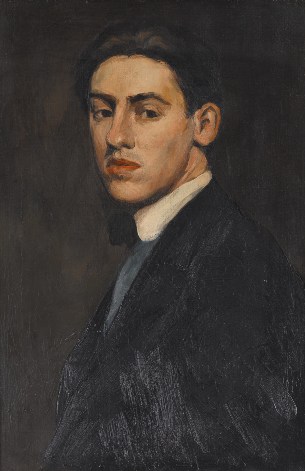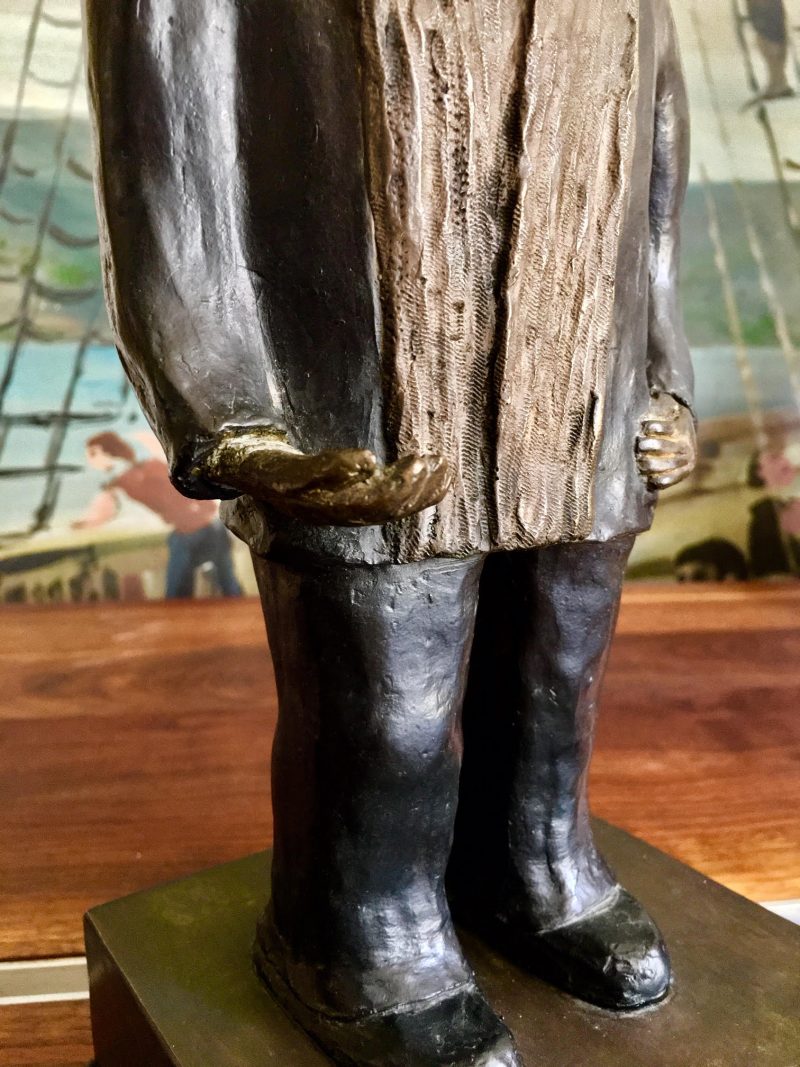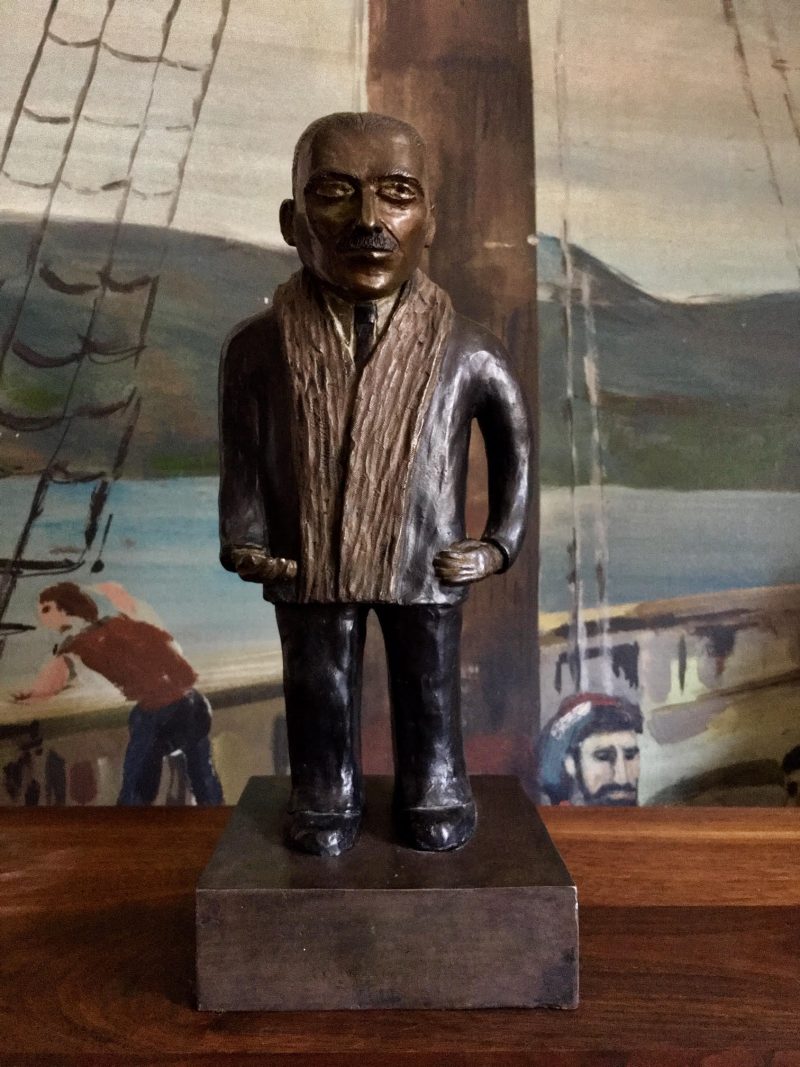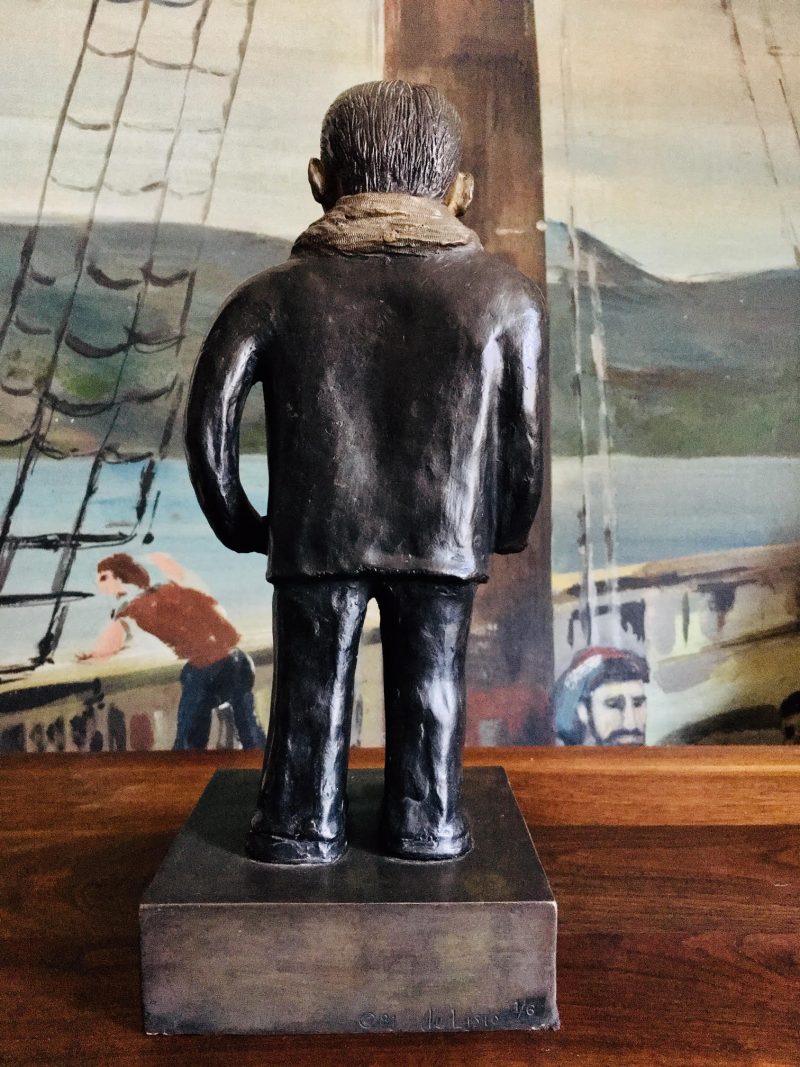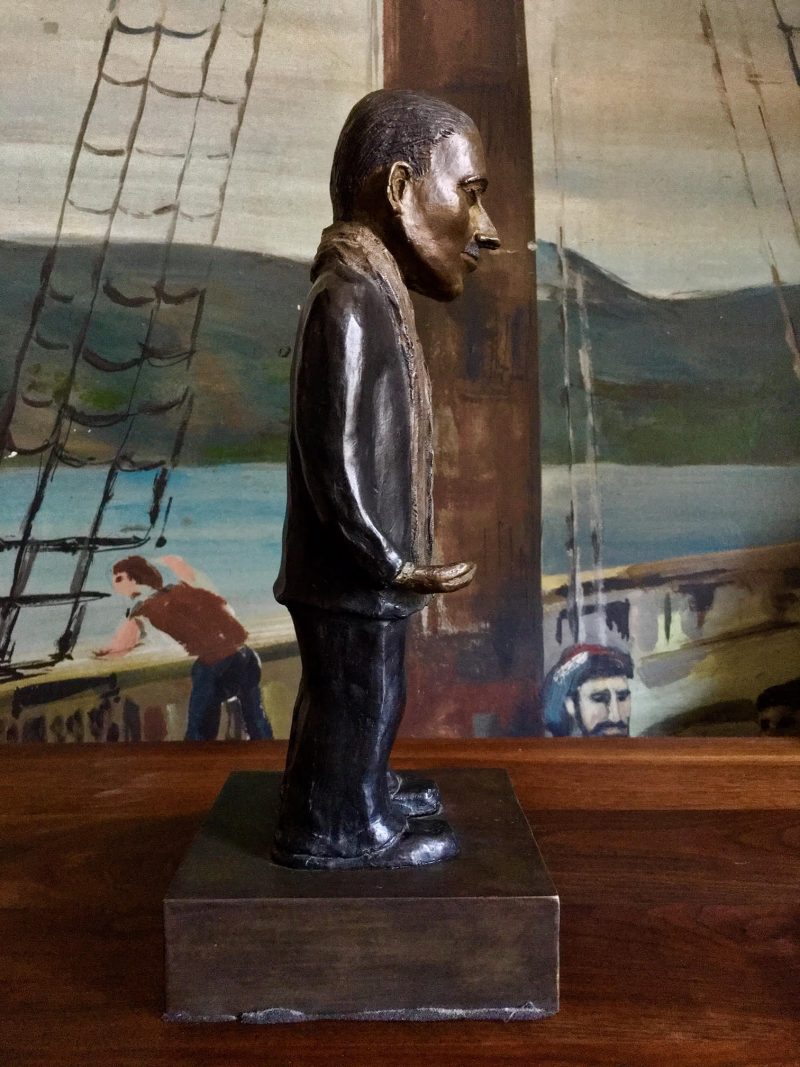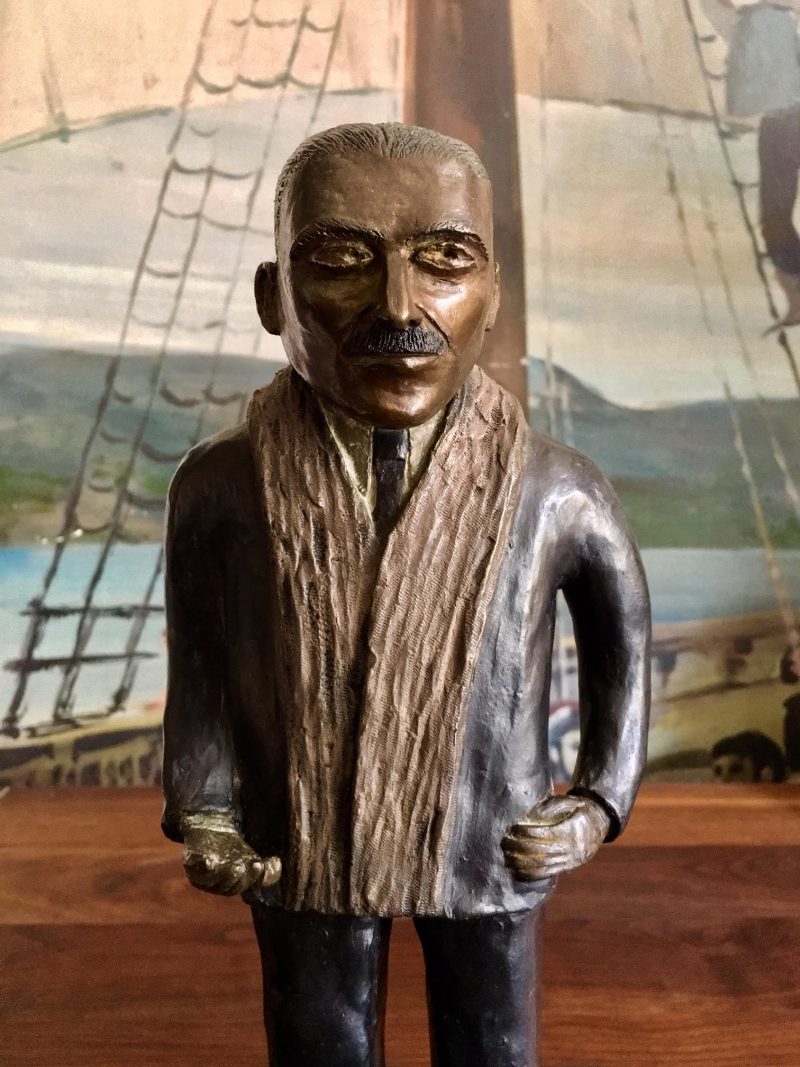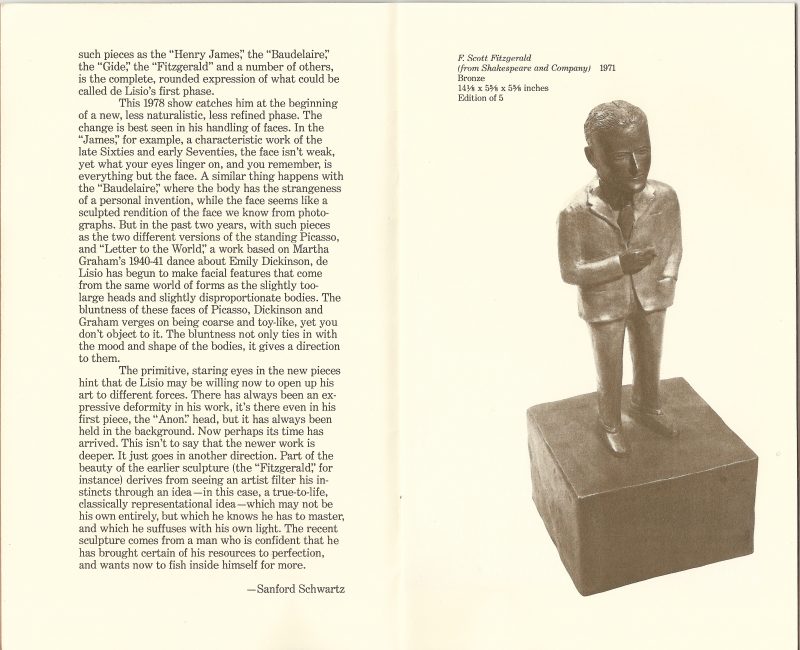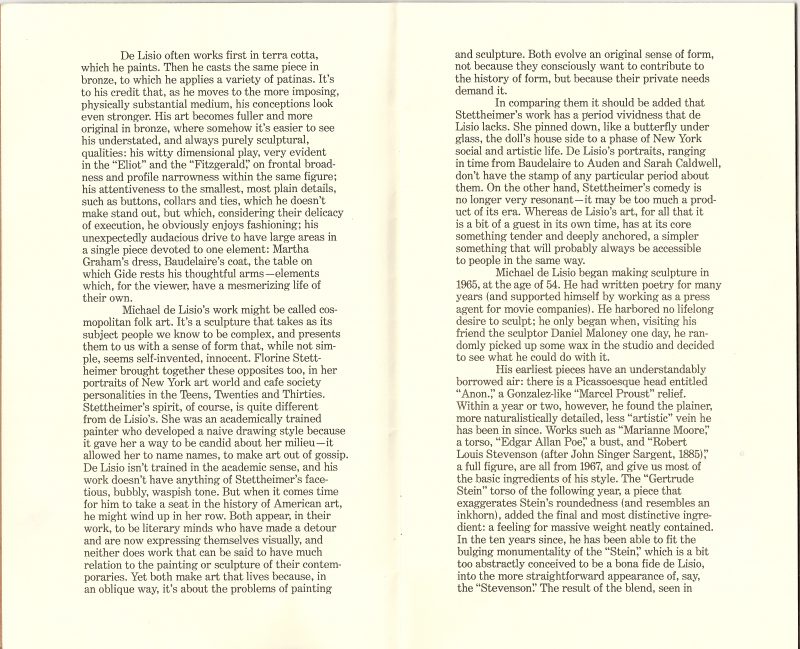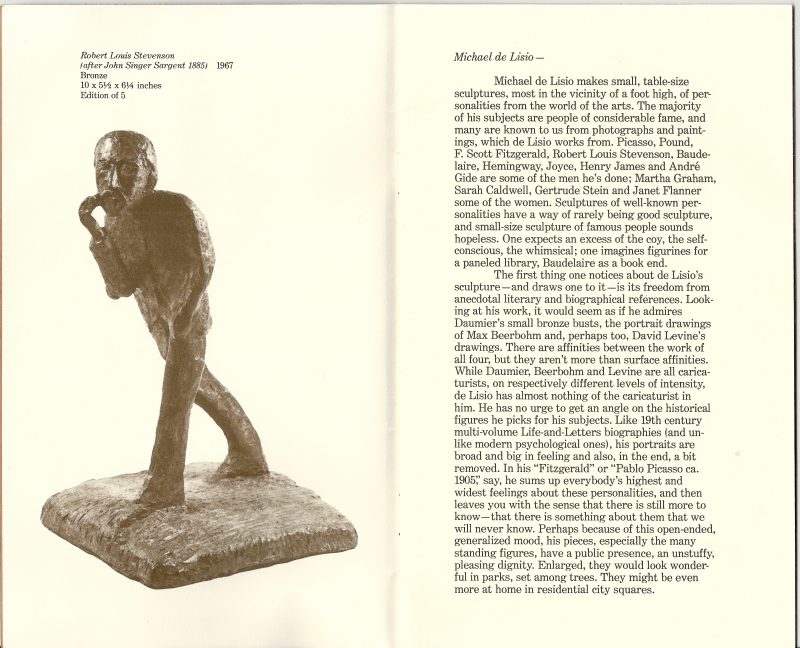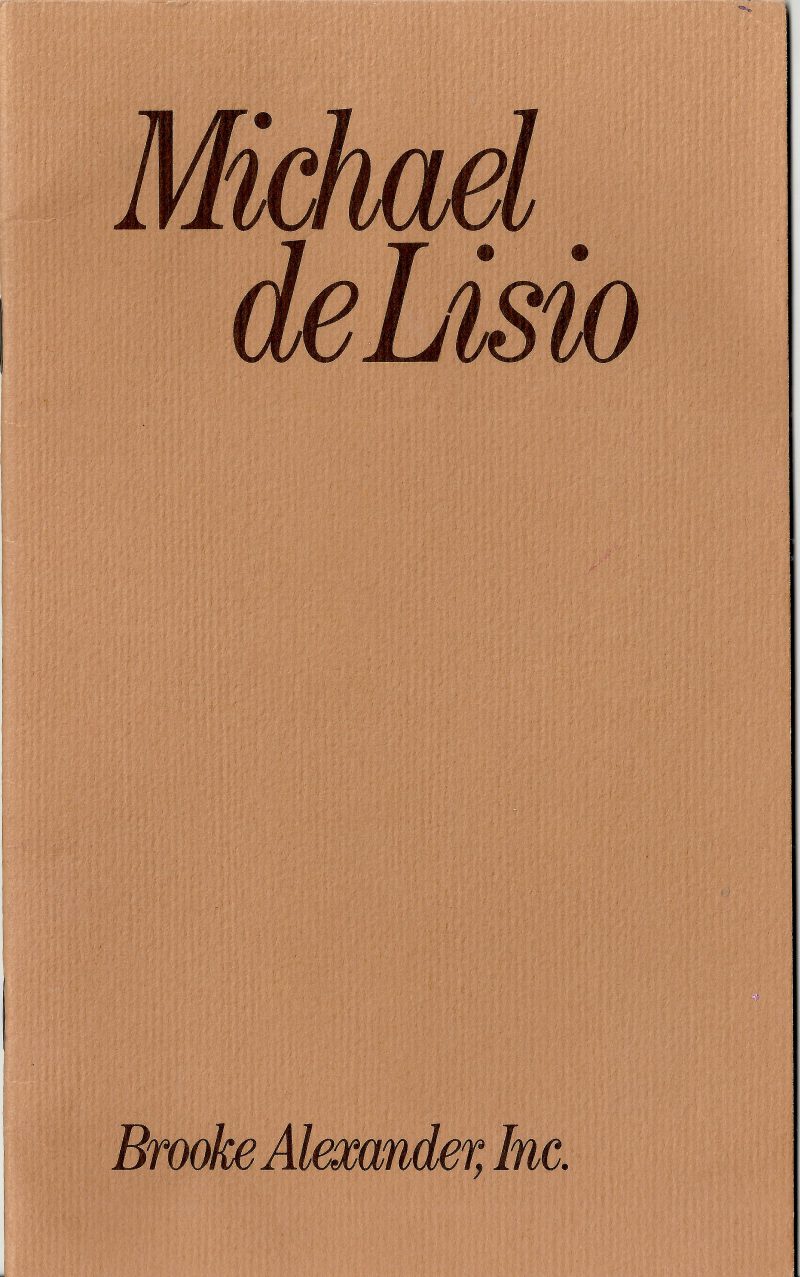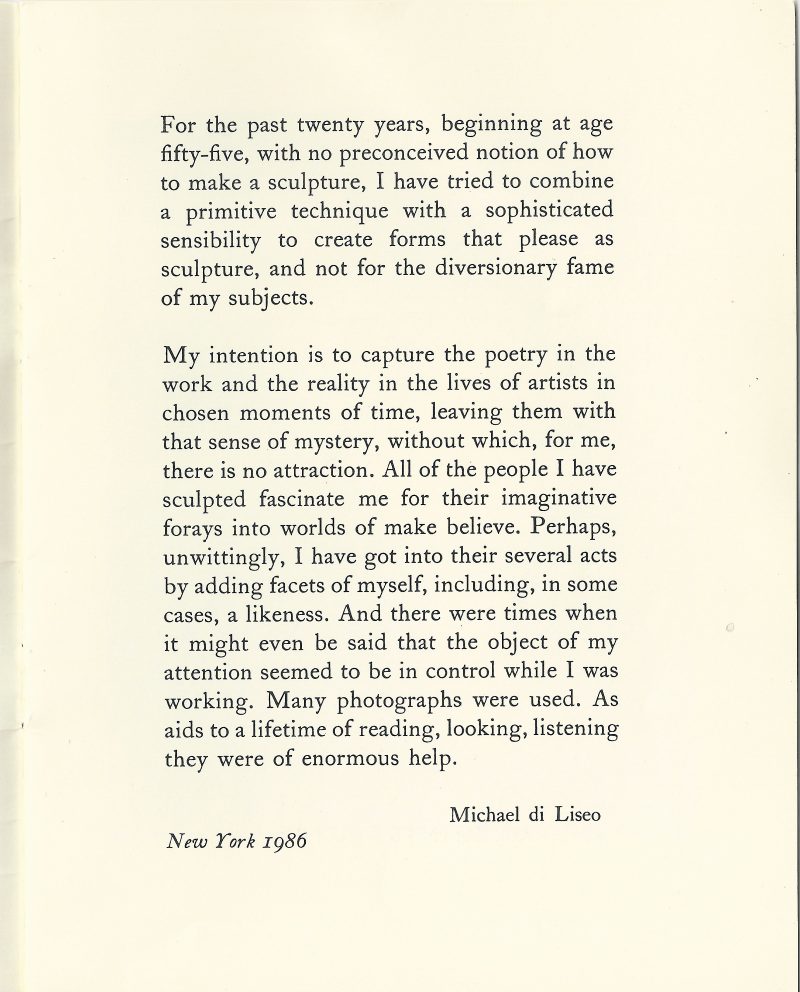Bronze Sculpture of Charles Demuth, Michael DeLiso, 1981
Michael De Lisio (American 1912-2003), Sculpture Portrait of Charles Demuth (American 1883-1935), multipatinated bronze, Inscribed on base:” de Lisio / 1/6 / C.81″. JM Foundry mark/stamp on the base. Measures 13.25 inches height x 5.25 inches width at base x 3.25 inches depth of sculpture.
Price available upon request.
New York Times Obituary:
Michael de Lisio, 91, Sculptor Who Turned Photos Into Statues
By ROBERTA SMITH February 2, 2003
Michael de Lisio, a sculptor and poet, died on Jan. 21 in Manhattan, one day short of his 92nd birthday.
Mr. de Lisio was born in Manhattan. His parents were Italian immigrants, and he was largely self-taught. He had minor success as a poet, publishing sporadically in little magazines as well as in Scribner’s and The New Yorker.
After serving in the United States Navy during World War II, he worked for two decades in public relations, mostly for MGM. In 1965, at 54, he turned to sculpture. Working in painted terra cotta as well as in bronze, he began making small, seemingly quaint yet psychologically telling portraits of the writers and artists he admired and sometimes knew personally.
His depictions usually took well-known photographs startlingly into three dimensions, like Barbara Morgan’s famous 1940 image of Martha Graham with her torso pitched forward and her long gown sweeping upward like an open fan.
Other subjects included W. H. Auden, Janet Flanner, Truman Capote and Virgil Thomson, who were friends, as well as Emily Dickinson, Henry James, Marsden Hartley, Alfred Stieglitz and Toulouse-Lautrec. He also made a group portrait of Sylvia Beach and writers who congregated at her bookshop, Shakespeare & Company, in Paris in the 1920’s and 30’s.Mr. de Lisio had solo shows at the Nova Scotia College of Art in Halifax (1969); the Minneapolis Institute of Arts (1971); the Addison Gallery of American Art in Andover, Mass. (1973); and the Smith College Museum of Art in Northampton, Mass. (1974 and 1980).
He had New York gallery shows at Brooke Alexander in 1978 and Zabriskie in 1986 and a retrospective at Boston College in 1998. His works are in the collections of the Hirshhorn Museum and Sculpture Garden in Washington, the Addison Gallery, Boston College and the Smith College Museum of Art.
Mr. de Lisio’s companion, the journalist, editor and collector Irving Drutman, died in 1978.
Because of failing eyesight, Mr. de Lisio returned to poetry in his last decade, working in a style as understated and compressed as his sculpture:
“The charisma of 90
can be undone
by slowly becoming
91″.
www.nytimes.com/2003/02/02/nyregion/michael-de-lisio-91-sculptor-who-turned-photos-into-statues.html
https://www.bc.edu/sites/artmuseum/exhibitions/artlit/
Auction results: https://auctions.stairgalleries.com/lot/michael-delisio-1911-2003-portrait-of-virgil-thomson-3902101
Charles Henry Buckius Demuth (November 8, 1883 – October 23, 1935) was an American watercolorist who turned to oils late in his career, developing a style of painting known as Precisionism.
“Search the history of American art,” wrote Ken Johnson in The New York Times, “and you will discover few watercolors more beautiful than those of Charles Demuth. Combining exacting botanical observation and loosely Cubist abstraction, his watercolors of flowers, fruit and vegetables have a magical liveliness and an almost shocking sensuousness.”[
Demuth was a lifelong resident of Lancaster, Pennsylvania. The home he shared with his mother is now the Demuth Museum, which showcases his work. He graduated from Franklin & Marshall Academy before studying at Drexel University and at Philadelphia‘s Pennsylvania Academy of Fine Arts. While he was a student at PAFA, he participated in a show at the Academy, and also met William Carlos Williams at his boarding house. The two were fast friends and remained close for the rest of their lives.
He later studied at Académie Colarossi and Académie Julian in Paris, where he became a part of the avant garde art scene. The Parisian artistic community was accepting of Demuth’s homosexuality. After his return to America, Demuth retained aspects of Cubism in many of his works.
Demuth, who was himself a gay artist, was a regular patron at the Lafayette Baths. His sexual exploits there are the subject of watercolors, including his 1918 homoerotic self-portrait set in a Turkish bathhouse.[
Demuth spent most of his life in frail health. By 1920, the effects of diabetes had begun to severely drain Demuth of artistic energy. He died at his residence in Lancaster at the age 51 of complications from diabetes. He is buried at the Lancaster Cemetery.
